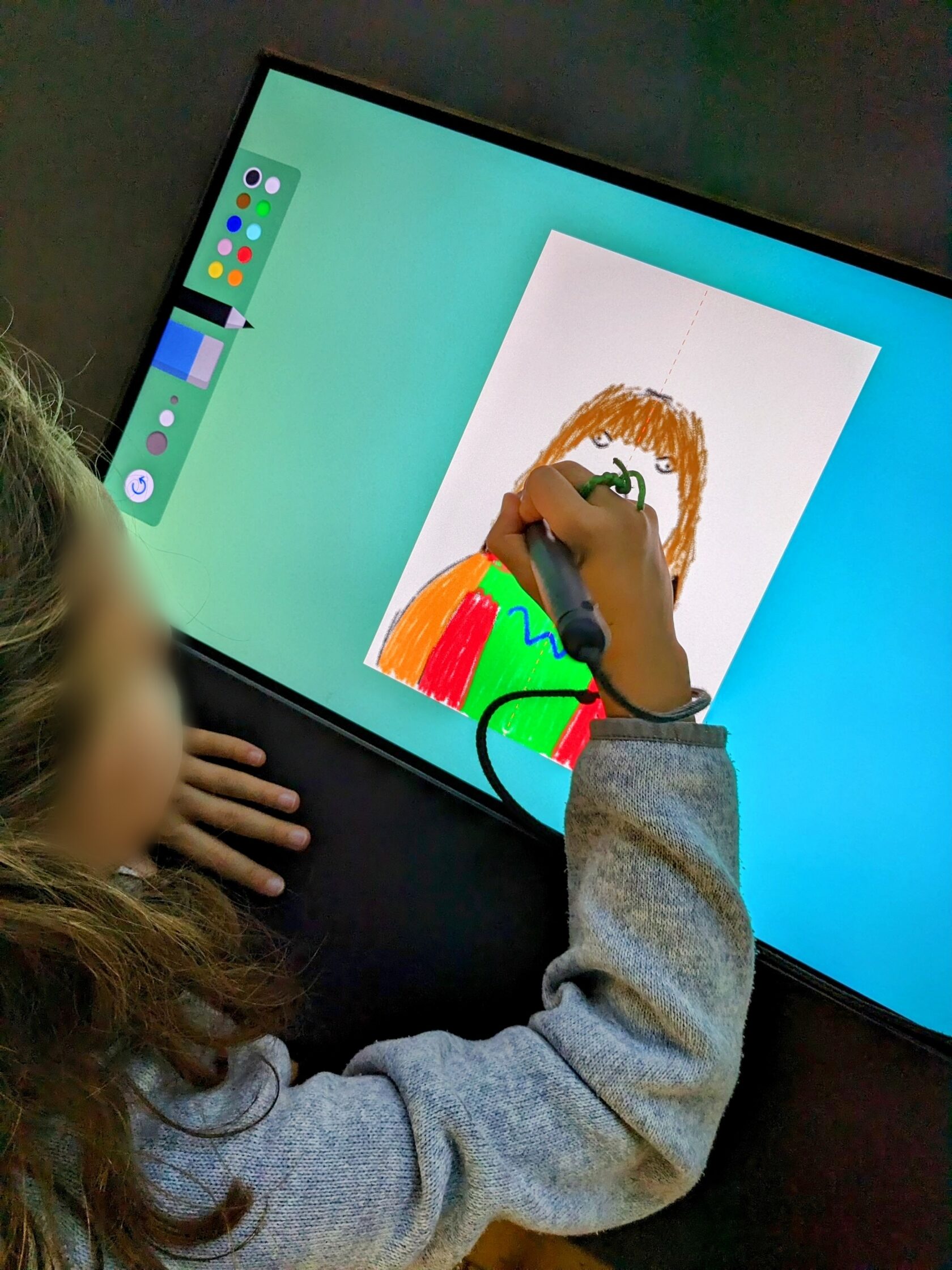As we walked through the grand entrance of the Tate Modern, our hearts filled with anticipation and curiosity. As a mother and an aunt to M, we knew that this wasn't just another day out with her. It was a golden opportunity to unlock a world of creativity, understanding, and reflection, all through the awe-inspiring power of art.
In the heart of London, the Tate Modern stands proudly, its two buildings, Natalie Bell and Blavatnik, offering a wealth of art and culture. The fourth floor of both buildings is dedicated to emerging artists, a canvas for fresh perspectives and groundbreaking expressions. We were about to embark on a journey of exploration and discussion, a voyage into the depths of artistic expression, and we couldn't have been more excited.
Our approach was simple yet effective: ask and engage. We didn't simply observe the art, we talked about it. We asked M what she saw, how she felt, and what she noticed. We discussed her understanding, delved into the realms of confusion, and even touched upon what she didn't particularly like. We were not just two of her family members, but facilitators of open-ended questions, showing genuine interest in her perceptions and interpretations.
In the heart of London, the Tate Modern stands proudly, its two buildings, Natalie Bell and Blavatnik, offering a wealth of art and culture. The fourth floor of both buildings is dedicated to emerging artists, a canvas for fresh perspectives and groundbreaking expressions. We were about to embark on a journey of exploration and discussion, a voyage into the depths of artistic expression, and we couldn't have been more excited.
Our approach was simple yet effective: ask and engage. We didn't simply observe the art, we talked about it. We asked M what she saw, how she felt, and what she noticed. We discussed her understanding, delved into the realms of confusion, and even touched upon what she didn't particularly like. We were not just two of her family members, but facilitators of open-ended questions, showing genuine interest in her perceptions and interpretations.
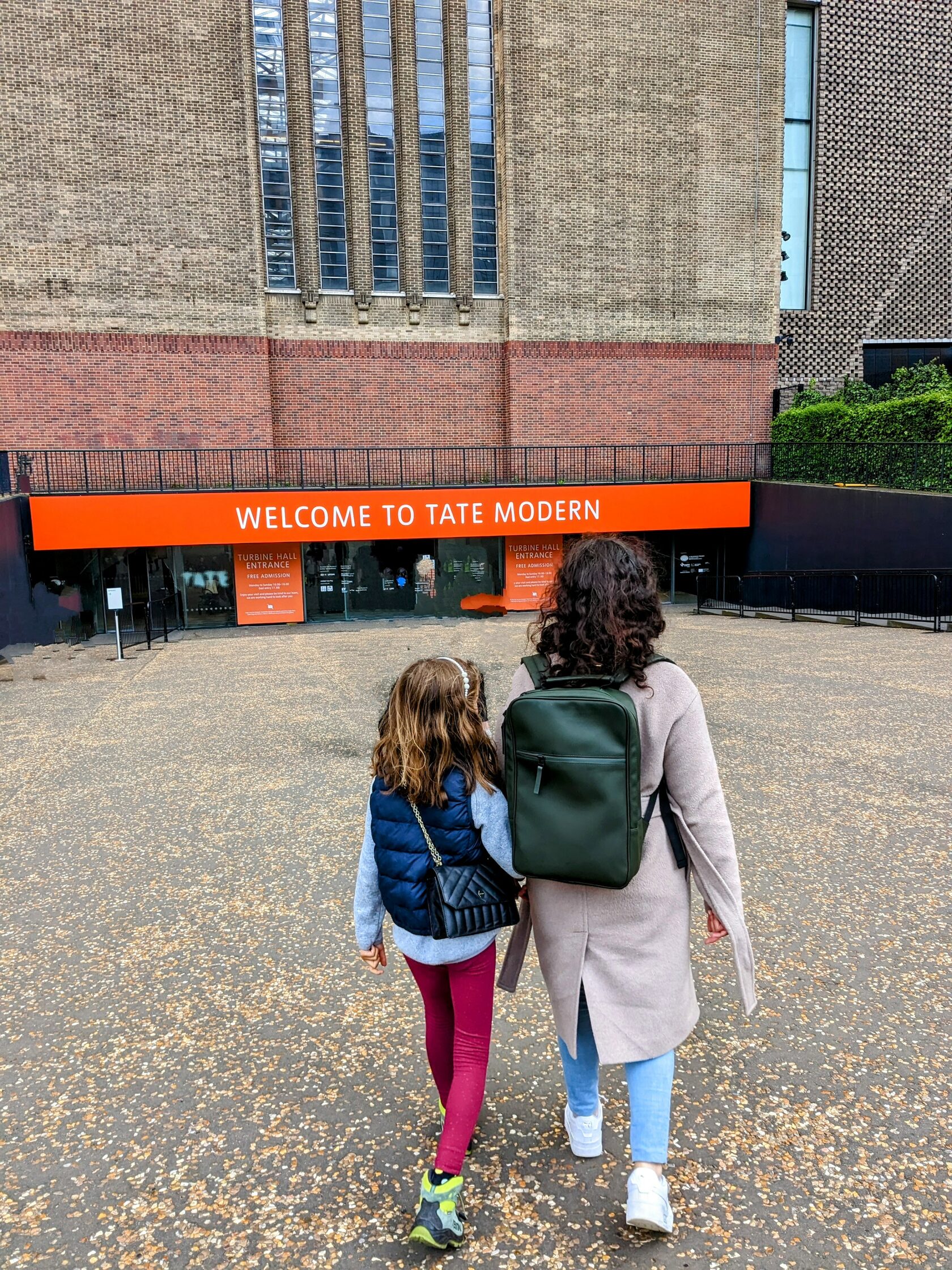
Engaging with Art Through a Child's Eyes
Our first piece was a large wall covered with small frames of cut-out newspapers, glued in various geometrical figures of opaque colors. "What do you see in this piece of art?" we asked. Her eyes danced over the pictures as she pondered the question. "A bunch of stories exploding," she finally responded, her imagination capturing some of the artist's messages. “How would you explain this explosion?” She took some time to reflect and shared with us “There are so many stories exposed for you to read that you do not know where to begin”.
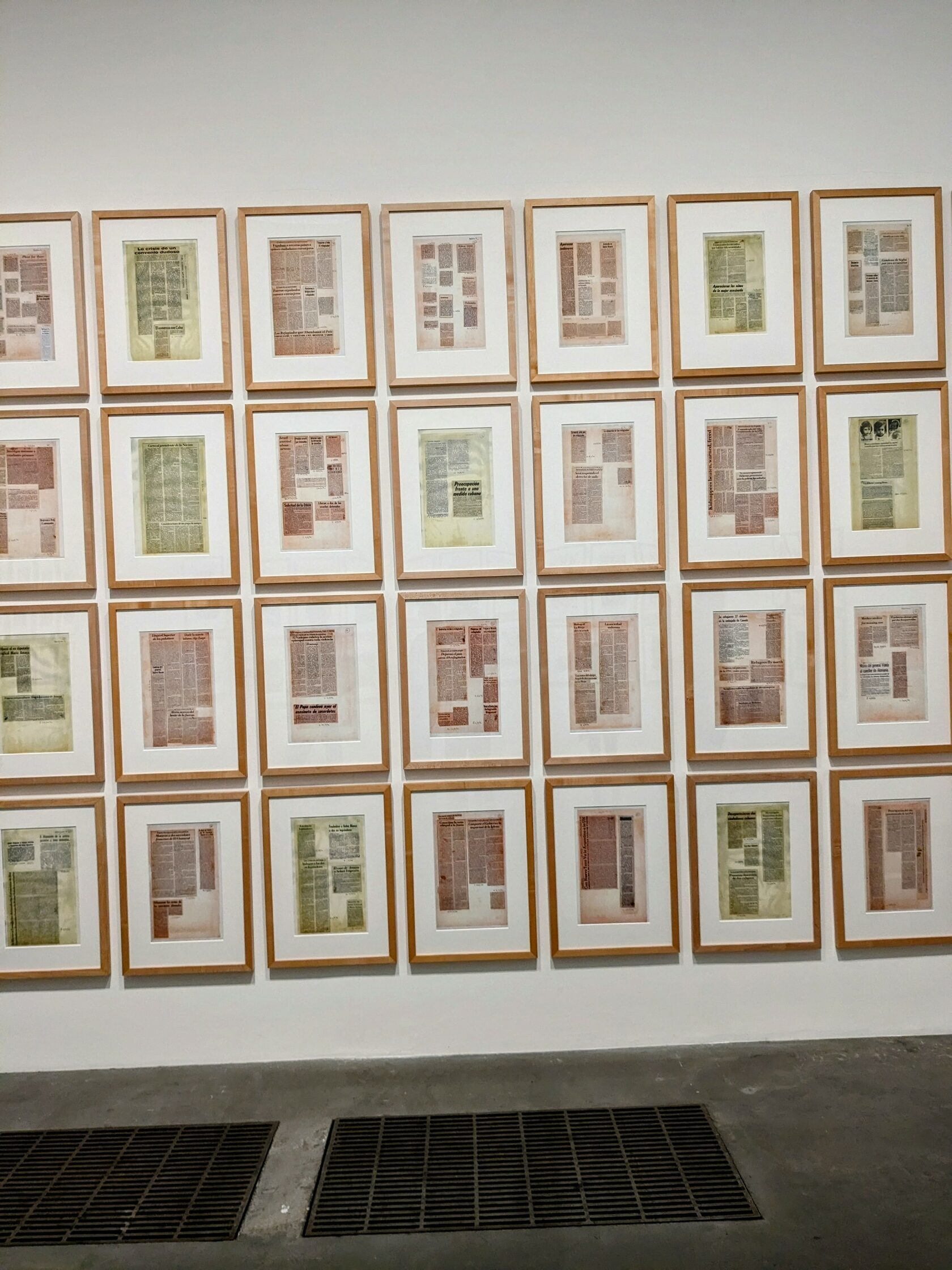
In front of a sculpture made entirely from analog radios, we asked her to close her eyes and tell us what she could hear coming from the radio. She listened to the appliances, before responding, "It sounds like chattering and gibberish, but I like it. It makes you try to turn off many of the noises to concentrate only on the ones that interest you right now". She circled around it and tried to find the source of animal noises and drums playing. “It is hard to try to mute the sounds in my head and sort out everything that is coming out of all the radios at once!”
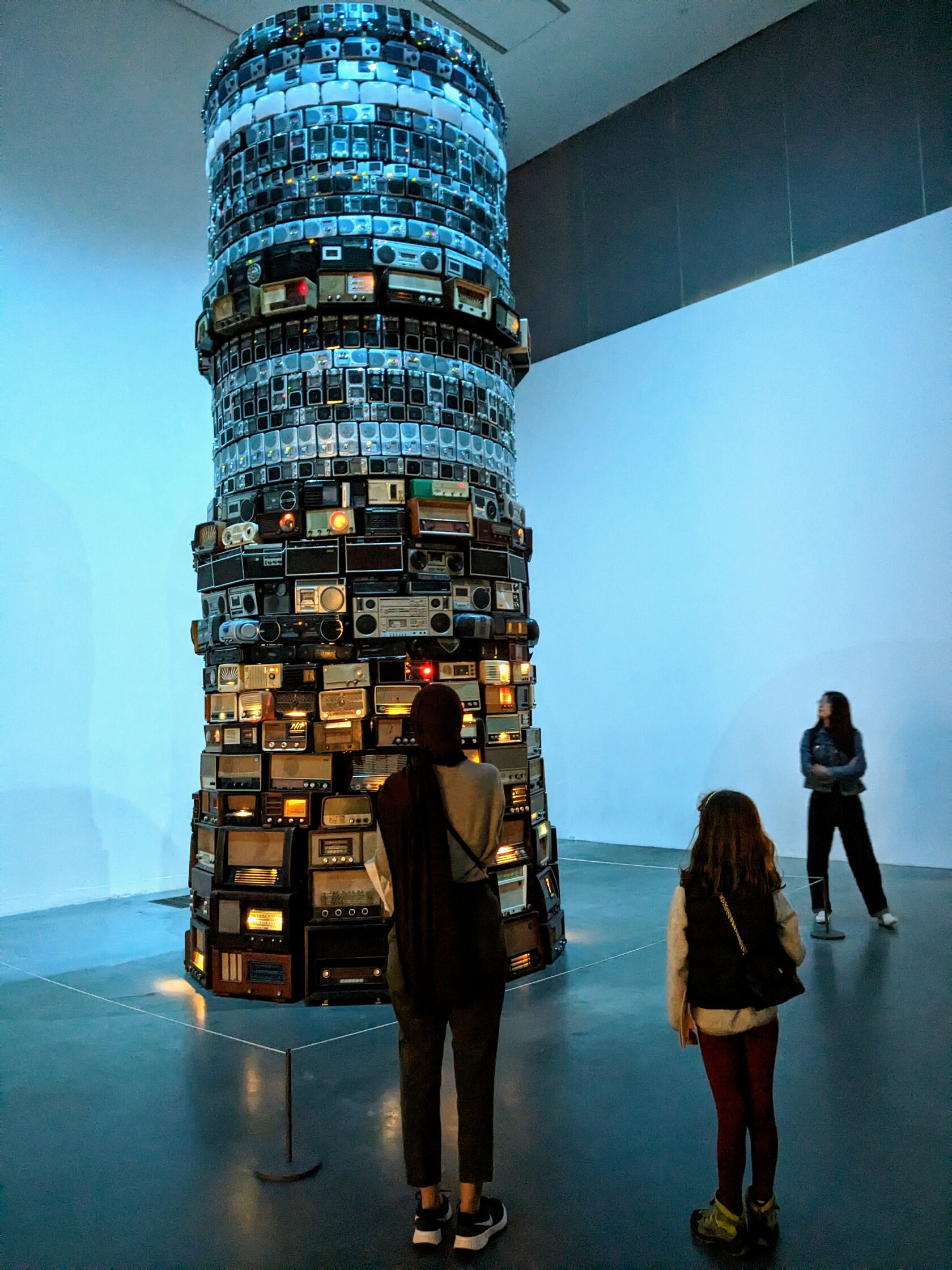
Suddenly, she ran towards a model made entirely from recycled materials. Intrigued, we asked her, "Wow, it piqued your interest immediately. What caught your attention?” She stands there and without turning around to face us, she answers, “I recognize many small things that we use in our camper van, and I like how she makes use of them to create a structure”. She stayed still for a while and then I asked, “How does this piece make you feel?" She paused, studying the artwork, before commenting, "It's ingenious and I love it. It shows you can make beautiful things from random stuff."
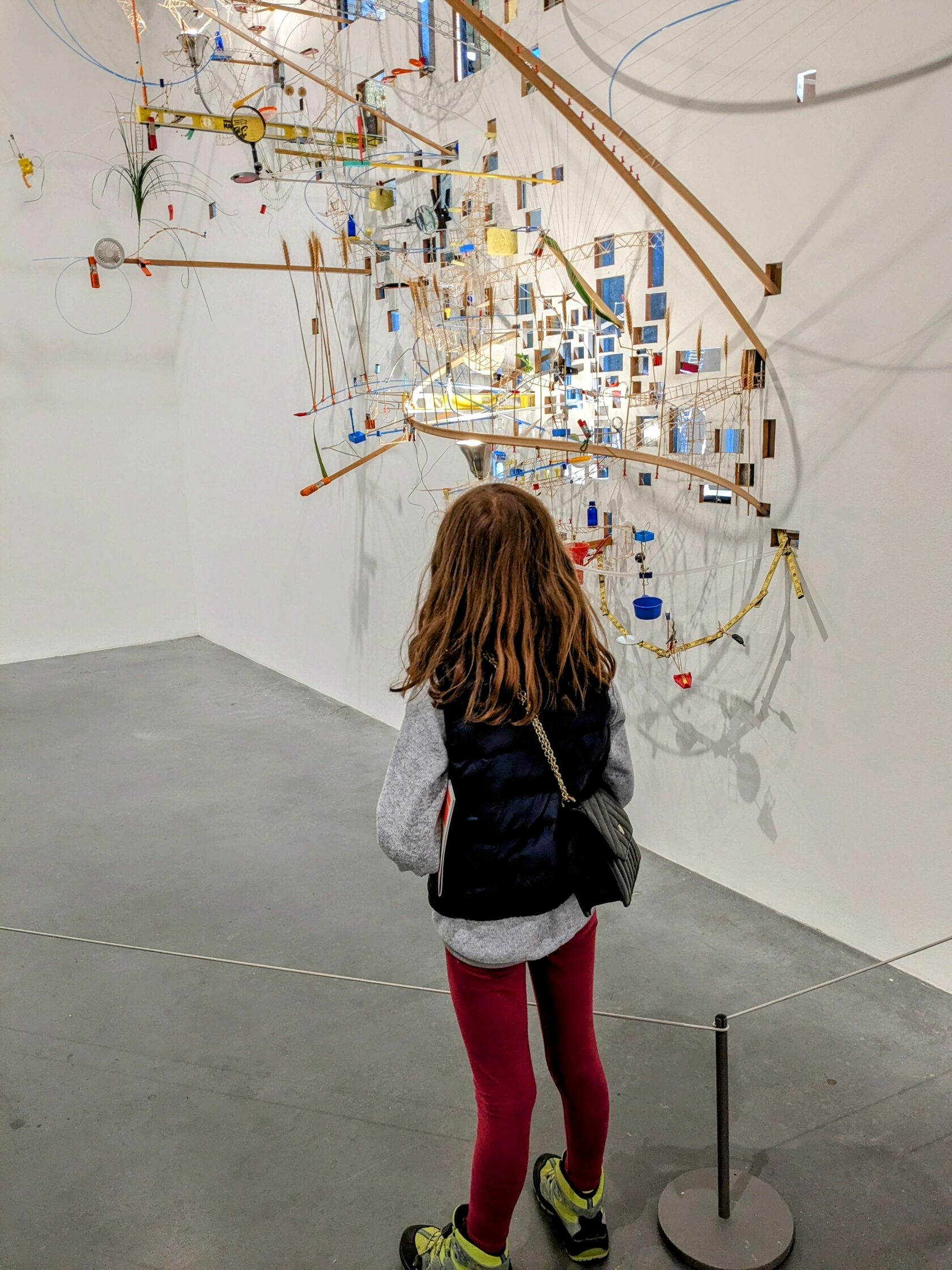
Finally, we stood before a monochrome piece, stark and thought-provoking. "What do you notice about this artwork?" The silence enveloped us as she took her time, finally stating, "It's simple and powerful. You don't always need lots of colors to make something stand out." We walked below it to have a better look at the hanging blinds, and she made an association: “They look like Japanese lamps. Nice touch”.
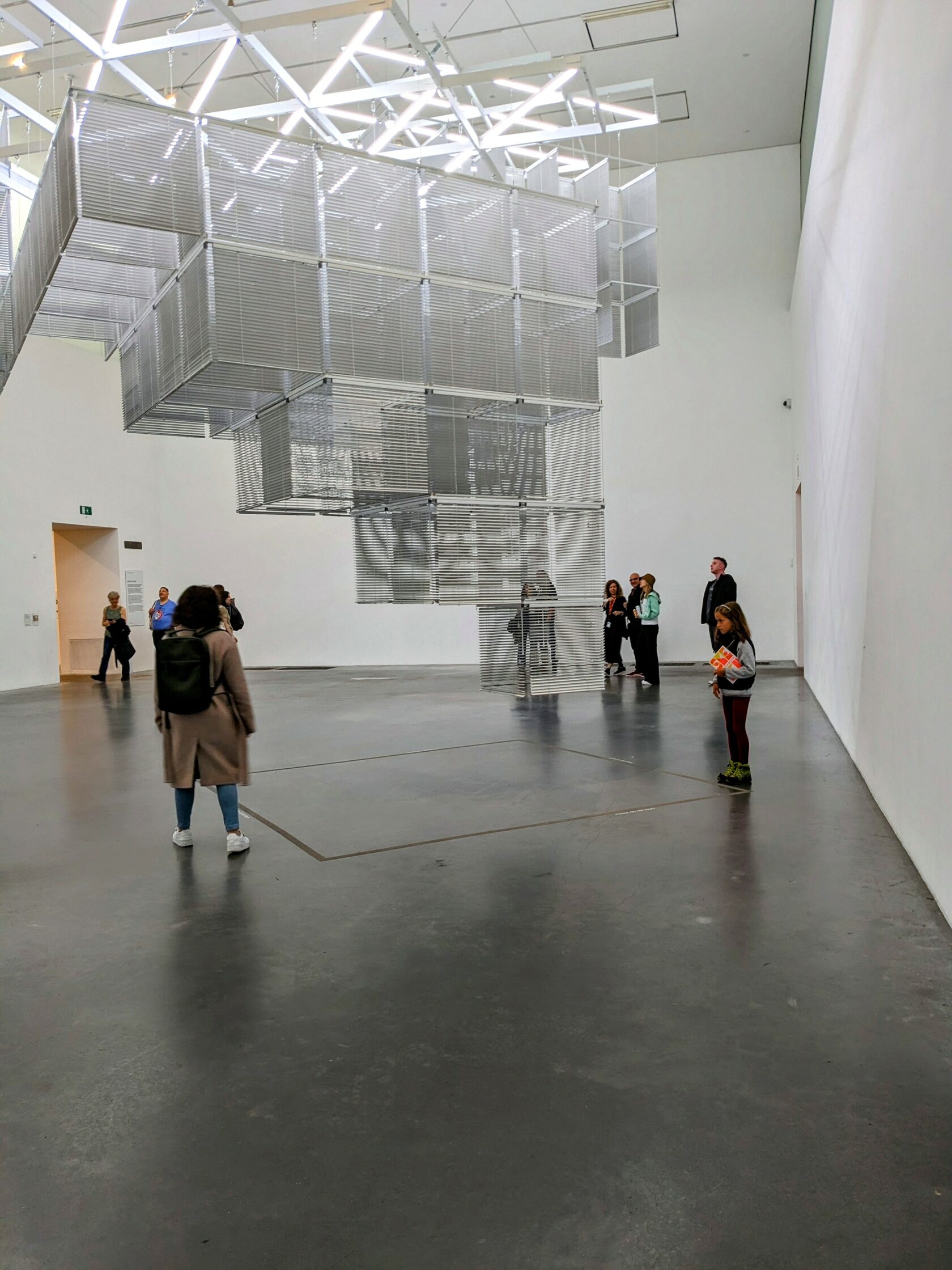
Crafting a Vision: Guiding Young Minds to Discover Art's Language from Every Angle
These questions weren't about leading her to a predetermined understanding, but instead encouraging her to develop her own. It was a testament to the saying that art education should teach children how to think about art, not what to think about it. We introduced her to the concept of perspective, encouraging her to view a sculpture from different angles. "How does it change when you look at it from here?" we asked, as she circled the piece. We also explored symbolism, using a series of paintings to discuss how colors, shapes, and objects can represent different emotions or ideas.
The climax of our adventure was a visit to the Tate Draw, a space where visitors can create and exhibit their own art. M gleefully sketched her own interpretation of the art she had seen, her creativity flowing onto the paper. We uploaded her masterpiece onto the online exhibition platform, a proud moment that crowned an unforgettable day. The visit to the Tate Modern was more than just a fun day out. It was an enriching experience that honed our child's creativity, critical thinking, and visual literacy, all while fostering a love of art.
As parents, my husband and I have learned that art isn't just something to be observed - it's something to be lived, breathed, and conversed with. And what better way to start that conversation than with open-ended questions that invite our children to share their unique perspectives.
The climax of our adventure was a visit to the Tate Draw, a space where visitors can create and exhibit their own art. M gleefully sketched her own interpretation of the art she had seen, her creativity flowing onto the paper. We uploaded her masterpiece onto the online exhibition platform, a proud moment that crowned an unforgettable day. The visit to the Tate Modern was more than just a fun day out. It was an enriching experience that honed our child's creativity, critical thinking, and visual literacy, all while fostering a love of art.
As parents, my husband and I have learned that art isn't just something to be observed - it's something to be lived, breathed, and conversed with. And what better way to start that conversation than with open-ended questions that invite our children to share their unique perspectives.
- How might we, as parents, transform our approach to art, allowing it to become a living dialogue with our children rather than a mere observation?
- In what ways can we craft our questions to truly invite and celebrate our children's unique insights and interpretations of art?
